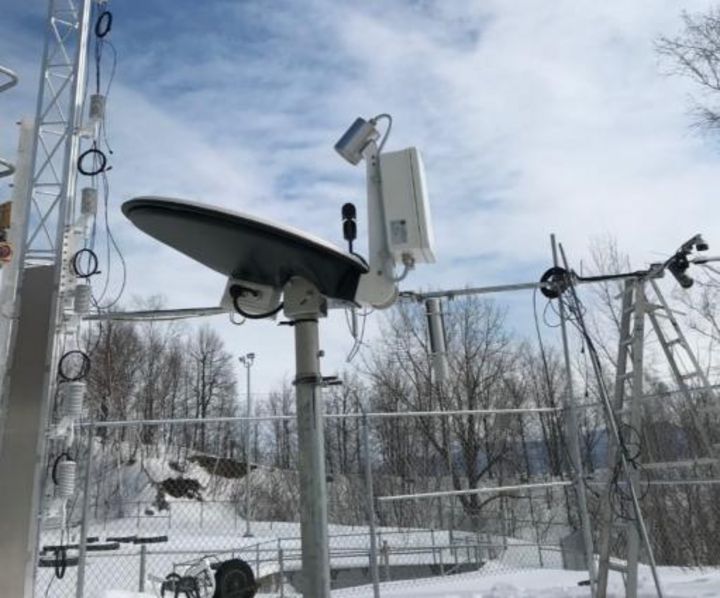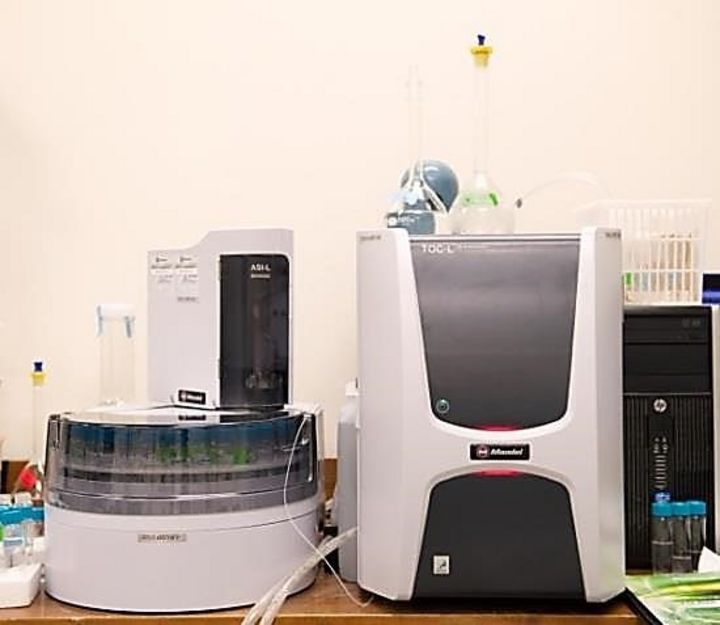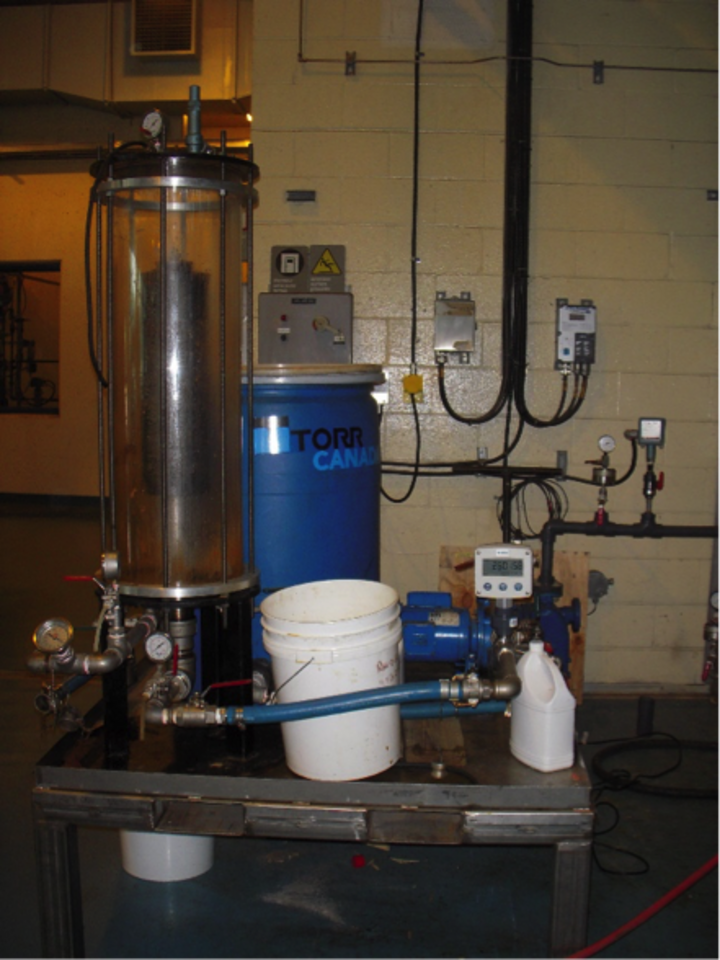
The Earth Observation System (EOS) provides the infrastructure needed to study and document ecosystems in the St. Lawrence River Valley (VFSL) in Quebec in order to develop a quantitative predictive model of system-wide interactions in the geobiosphère-climate of the region. A key aspect of EOS is its ability to include a combination of fixed facilities and a flexible mobile infrastructure to observe and analyze the Dynamic Terrestrial System (DES) in remote areas of Quebec. The VFSL climate is characterized by exceptional weather conditions (eg, ice storms), varied uses of land (urban, natural, etc.) and biodiversity flows (species loss and invasion).

- Atomic absorption spectrophotometer (flame and graphite furnace)
- Automated titrator and Karl Fisher
- Capillary electrophoresis
- Differential Scanning Calorimeter (DSC)
- Fluorescence Spectrometer X (XRF)
- FTIR infrared spectrometer with cell specialized in gas and biogas analysis
- Fluorimeter
- Gas chromatograph (GC-TCD) for gas analysis
- Gas chromatograph (GC-FID)
- FTIR Infra-Red Spectrometer For Solid And Liquid Samples
- Ion chromatography
- Gas chromatograph combined with a mass spectrometer (GC-MS)
- High-performance liquid chromatography combined with an ion-trap mass spectrometry (LC-MS)
- High-Performance Liquid Chromatography (2 Units, One Of Which Is Equipped With A Fraction Collector)
- High-Performance Liquid Chromatograph With An ELSD Detector (Electrospray Light Scattering Detector)
- Kjeldahl analyzer (total nitrogen and ammonia)
- Spectromètre d’émission optique muni d’un plasma à couplage inductif (ICP-OES)
- Thermogravimetric analyzer coupled with mass spectrometer (TGA-MS)
- Total organic carbon analyzer
The infrastructure consists of a Siemens SOMATOM Definition AS + 128 CT scanner, a data processing and storage unit, a sedimentology laboratory, and hydraulics, bio-sedimentology and hydrology equipment. The scale of this infrastructure is unique in Canada and in a class of its own worldwide.
- Gas chromatography and mass spectrometry
- Ion chromatography
- Atomic absorption spectrometry with flame
- Zetameter
- Infrared spectroscopy
- Total organic carbon analyzer
- High performance liquid chromatography
- UV-Visible spectrophotometer
- Solid phase extraction equipment for hydrocarbons
- Basic analytical equipment
- Oil & grease analyzer
- Activated carbon adsorption column
- Column for aeration tests
- Respirometer

/// Description :
- A 55 L / min, 15 psig capacity coalescing separation vessel, SS316 stainless steel and acrylic construction with internal support for TORR ™ coalescing cartridge and safety valve
- A centrifugal type electric water pump, 220 VAC, 15 amp
- A 200-liter plastic back-up tank with removable cover for storing and recirculating water
- Set of 1 '' industrial piping, flexible for interconnection of the various elements of the system
- Set of valves for component isolation and for pump flow control
- Pressure gauges at the entry and exit of the vessel
- A 48 '' x 48 '' stainless steel table with retention walls in the event of a system leak on which all system components rest
- 10 sealing washers for replacement
- Made and assembled in Quebec
- Works with TORR ™ coalescing cartridges. Model TC-008-2, 6 '' diam x 20 '' high, nylon and nitrile gaskets
This pilot laboratory is a powerful, mobile and flexible infrastructure for testing and demonstrating, at low cost, and directly in industrial environments or on degraded sites, new remediation and decontamination processes before their implementation on a real scale. . The laboratory team works to develop technologies for the treatment, decontamination and recovery of various matrices polluted by metals and other types of pollutants. The development of processes contributing to sustainable development in the field of environmental technologies is a priority research area of the INRS. The laboratory has a multifunctional mobile pilot plant to operate various types of physical, chemical and biological processes for the treatment of soils, hazardous wastes, gases, as well as industrial residues and effluents directly on contaminated sites.
/// Features:
- Processing volume: 1 to 4 L
- Operating pressure up to 600 psi
- Feed flow ranging from 1 L/min to 6 L/min
- Membrane coupons for MF, UF, NF, and OI
- Can be adapted to forward osmosis
/// Samples:
- Liquids: effluents, residual liquids, process waters, fluids, etc.
/// Examples of applications
- Scanning and selection of the type of membrane to be used
- Optimization of membrane filtration parameters: flow, pressure, temperature
- Studies of the effects on liquids and membranes (precipitations, clogging, pressure drop, etc.)
/// Features:
- Enables the simultaneous testing of several flocculation / pre-filtration conditions
The main equipment for characterizing the physical and geochemical properties of aquifers is a specialized Geotech 605 drilling rig. With the data collected, it is possible to model the flow of water and the transport of contaminants in aquifers. It is also possible to assess the vulnerability of aquifers to contamination, to determine the most suitable protection methods and methods of exploitation for sustainable management of the groundwater resource. This crawler drill has a real-time recording system of mechanical and electrical soil responses. It also allows soil or groundwater sampling by installing observation wells. The system has two drilling heads, one for drilling by penetration (cone penetration) in loose deposits, and another equipped with a hydraulic hammer for rotary impact drilling up to 50 m in rock and loose deposits according to the conditions.
/// Examples of applications:
- Separating and concentrating metal nanoparticles